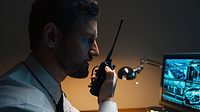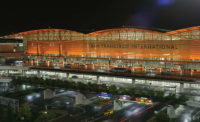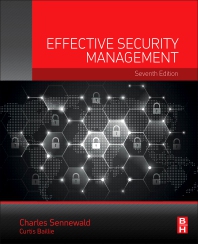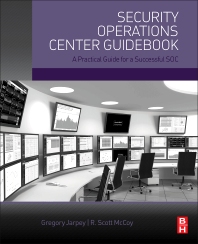Aurora, Colorado. Penn State. The Indiana State Fair.
These recent tragedies were clearly driving the agendas of speakers and attendees at the 2012 National Sports Safety and Security Conference and Exhibition in New Orleans early last month. The conference, hosted by the National Center for Spectator Sports Safety and Security (NCS4), tailored its speaker lineup around some of these recent issues – active shooter protocol, sexual misconduct policy and weather risk mitigation.
The tragic shooting in Aurora, Colorado, that left 12 dead and 58 wounded, is still ringing in the country’s ears two months later. The mass murder at a Sikh temple in Wisconsin in early August left the shooter dead, but the community no less rattled.
Andrea Schultz, Chief of the Commercial Facilities Sector at the U.S. Department of Homeland Security, emphasized the need to recognize the profile of an active shooter, but moreover to train employees – even part-time employees in venues like shopping centers or concession stands – in active shooter protocol.
“You have these 21-year-old kids in charge of the safety of lives,” she says. “They have to be able to direct people in the right way.”
She highly recommends the survival plan resources released through the DHS Active Shooter Program. The resources, including online seminars and classes, posters, booklets and pocket cards, have trained 125,000 people over the past four years.
“Work with law enforcement too,” Schultz says. “This is the key to a united plan. Create an EAP with the law enforcement that will be responding to your call. Once you know how they will act, you can educate your employees on how to work with them without hindering them.”
She cited incidents where victims would run toward or grab hold of law enforcement officers, and even cases where people ran toward the sound of gunshots, not away.
“People don’t always think rationally,” she says. “So establish these plans early and practice sharing information or turning over technology or surveillance controls entirely to law enforcement.”
Security executives should also create training programs to teach employees what vital information to tell police dispatchers on 911 calls, how and where to shelter in place, how to address the families of victims and what to look for during an exit interview that should spark warning signs for security personnel.
The other warning signs that NCS4 attendees were eager to uncover are those related to sexual misconduct – a topic spurred on to be one of the most attended keynote speeches by the latest scandals from Syracuse, Penn State and former presidential candidate Herman Cain.
Lisa Friel, who has handled thousands of sexual assault, abuse and harassment cases during her time at the New York City District Attorney’s office and now as the Vice President of T&M Protection Resources, says that sexual misconduct is an industry-wide problem, with incidents in every single sport.
“More incidents are going public,” she says. “That doesn’t mean that there are more incidents happening, but there’s no handling it privately anymore.” With social media and less tolerance of lower level behavior, she adds, it’s becoming easier and more accepted to report these events instead of sweeping them under the rug.
As a result, security executives have to be proactive in order to mitigate the behavior and reduce the risk of sexual misconduct in their organizations.
“It’s not just about discipline,” Friel says. “It’s about the message you’re sending in and out of the workplace.”
She recommends that every organization, no matter the size, have “user-friendly” reporting mechanisms and support for whistleblowers – one of the major pitfalls at Penn State, according to the independent Louis Freeh report on the Penn State situation – as well as explicit policies directly related to children.
“Your best defense is training everyone, from top to bottom,” she says. “Talk to players and staff about the risk and laws in that state, about the liability they face for each possible action.
“Appeal to two levels – moral and self-interest. Make sure that they know the action is wrong, and also how it can hurt them,” Friel adds.
She also strongly recommends that when confronted with a sexual misconduct incident, outside experts should immediately be brought in to spearhead the investigation. Handling it less like an HR matter – like Syracuse did by trying to keep the investigation internal, she notes – only makes the problem worse. An outside investigator adds credibility within the organization and the media, as well as obtaining the accurate facts of the incident.
“You need someone with subject matter expertise and prior sexual misconduct investigation experience,” Friel says. “The public has many misconceptions about assault,” and organizations have to move “outside the fishbowl,” she adds, to mitigate their risks, deter the behavior and solve the investigation.
And understanding the risks involved is key in the other main topic of the week – one of the most highly requested topics of the year – handling the threat of weather.
In August, 2011, a temporary stage at the Indiana State Fair collapsed from a 59-mile-per-hour straight-line wind, leaving seven dead and injuring dozens. A small panel of four experts shared their weather preparedness tips:
• Use available tools, such as integrated warning systems
• Show live radar feeds and emergency messages on Jumbotrons and all concourse televisions
• Use pre-recorded public announcements to ensure audible, calm delivery
• Pre-plan evacuation procedures for each event configuration (i.e., concerts, sporting events, conventions)
• Anchor possible debris to reduce risk of injury
• Maintain power in central command centers
• Design robust plans for evacuation, shelter-in-place, await further instructions, or follow directions commands
Cloud-to-ground lightning was also a concern in the number of fatalities – an average of 58 deaths annually. And while many of these events might be considered low-probability, high-impact incidents, such as tornadoes, programs from the National Weather Service, such as StormReady and the StormReady Supporter Program, are aimed to keep security and facilities directors informed about incoming weather and the risks involved in each front.
It is also important, says Dr. Laura Myers, a research professor at Mississippi State University Social Science Research Center, to adjust protocols to predict some irrational human behavior, especially from younger attendees.
“Not all people heed weather warnings or take appropriate action,” she says. “Or, they panic if they don’t get enough information. Sometimes they sit around waiting for secondary confirmation of an alert, and by the time they get it, they might not be able to evacuate in time.”
This is reason enough, she says, to target educational efforts throughout facilities, even going back to basics enough to clarify the differences between a watch and a warning.
“You have a responsibility there – understand your venue user and structure response systems to fit the situation and venue population,” Myers says. “You want to be a responder, not a victim.”
All in all, the conference goers were all speaking along that same line – prevention was the order of the day, not reaction. No one wants to be embroiled in the next Penn State scandal, the latest stage collapse or active shooter investigation. While these risks are inevitably impossible to eliminate, the effects can be preventable with advanced education and rehearsed protocol.
This article was originally published as "Preventing Tragedy: Sport Security Conference Answers Current Events" in the printed magazine.
NCS4 Awards Industry Leaders |
|
Congratulations to all of the award winners at the 2012 NCS4 Exhibition!
National Sports Security Distinguished Leadership Award Dan Mullin, Senior VP, Department of Investigations, Major League Baseball (MLB)
Facility of Merit Awards Amway Center (NBA) EverBank Field (NFL) Michigan International Speedway (NASCAR) Gaylord Family Oklahoma Memorial Stadium (NCAA) Ben Hill Griffin Stadium (NCAA) High Point Solutions Stadium (NCAA) LIVESTRONG Sporting Park (MLS) STAPLES Center (NHL) Bruno Event Team (LPGA) Lindner Family Tennis Center (USTA) Rangers Ballpark in Arlington (MLB)
Professional of the Year Awards Danny DeLorenzi, MetLife Stadium (NFL) Jim Hobbs, Michigan International Speedway (NASCAR) Paul Denton, The Ohio State University (NCAA) David Dollase, LIVESTRONG Sporting Park (MLS) Clinton Peterson, PNC Arena (NHL) Rosie Grace and Edward Boyens, Amway Center (NBA) Dick Clark, Linder Family Tennis Center (USTA) Rob Matwick, Rangers Ballpark in Arlington (MLB)
We’ll bring you more sports security coverage from the 2013 NCS4 Conference in Orlando, Florida, from July 16-18.
|











